ملخص
With the advancement of technology, difficulties in obtaining fossil fuels, and concerns about climate change, the global demand for renewable energy is increasing, leading to a booming solar energy market.
Solar microgrid is an increasingly popular technology and has become a hot topic in the field of solar energy. Most solar systems (سواء كان سكنيًا أو تجاريًا) are connected to the public grid, but microgrid provides another way to use solar energy.
It can help achieve energy independence and bring high reliability in energy use, which can be chosen by both residential and corporate users. According to its scale, solar microgrids can provide power to one or more facilities.
لذا, what exactly is a solar microgrid? هنا, we will explore the basic knowledge of solar microgrids, such as working principles, the benefits of choosing them, وهكذا, so that you can understand and choose them without making mistakes.
Five minutes of reading time can help you understand all of this. Now read on to information about solar microgrids.

What is a microgrid?
To understand solar microgrid, let’s first understand the concept of microgrids.
How is a microgrid defined? Explain the meaning of “microgrid” in Microgrid Knowledge: Microgrid is a self-sufficient local energy production and network distribution energy system with its own centralized geographical area. Microgrids, as small power grids, serve specific nearby users, such as university campuses, hospital buildings, commercial centers, or residential communities.
A microgrid is composed of one or more distributed energy sources (such as solar panels, المولدات) within this region, used for power generation.
فضلاً عن ذلك, the main microgrid products currently promoted in the market include energy storage devices, usually composed of batteries such as microgrid solar energy storage systems. The microgrid is connected to nearby building power grids through advanced software and control systems, providing customers with electrical energy.
Some community microgrids now have electric vehicle charging stations, supporting a wider range of energy supply facilities.
Due to their advantages in environmental sustainability and the cost reduction of energy storage technologies and renewable energy generation systems (such as photovoltaic systems), microgrids are becoming increasingly popular.

Some people use the term “microgrid” to describe simple distributed energy systems, such as rooftop solar panels. A key difference is that when the public power grid fails, the microgrid can still carry out power supply work; لكن, relying solely on solar panels is not enough as they cannot store and convert electricity.
Many homeowners who own solar panels are not aware of this fact, and they will be very confused when there is a power outage during the power grid outage.
A simple backup generator does not belong to the concept of microgrids.
A backup generator is a Plan B solution that is only used in emergency situations, while a microgrid operates continuously in a 7-day-24-hour mode throughout the year, and its usage behavior is different.
PS. The definition of microgrids by the US Department of Energy is a set of distributed energy electrical equipment located within a clearly defined area of use, serving as a single controllable entity of the power grid with interconnected loads. Microgrids can be connected and disconnected from the grid, enabling them to operate in grid connected or island mode.
ما هي الشبكة الشمسية الصغيرة?
A solar microgrid is a microgrid powered by the energy utilized by solar panels.
Microgrids are different from large centralized energy grids, but their power capacity is not as low as its name suggests. “Microgrid” is not a new concept and was previously commonly used in energy terminology for managing fossil fuel production. لذلك, when introducing it in the previous paragraph, we will say “explain” microgrid “in Microgrid Knowledge.
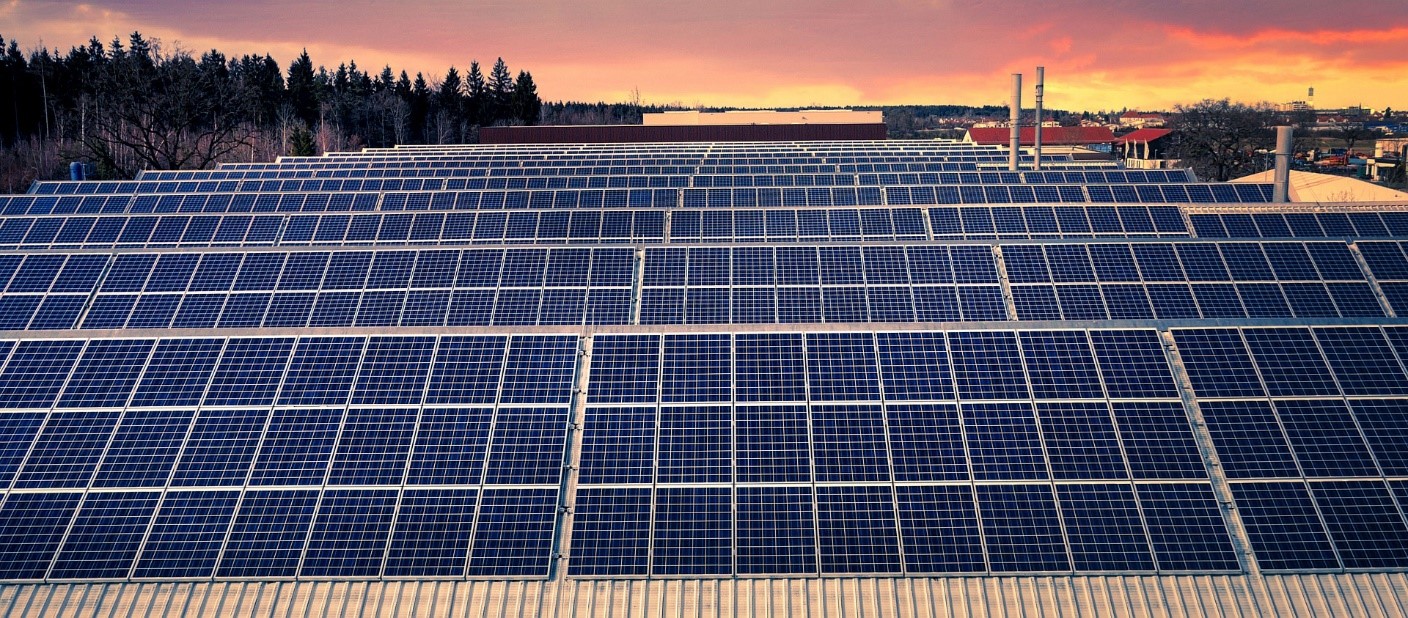
The important component of a typical solar microgrid is a “hub” composed of a set of solar panels. These solar panels collect solar energy, convert it into electricity, and store or distribute it to other locations connected to the microgrid, such as the load, through the battery.
Large scale microgrids are usually located in rural or remote areas, where it is difficult or economically feasible to expand large-scale grid infrastructure, so public grids will not be built in the past.
Microgrids can allow remote areas to enjoy the benefits of connecting to large power grids, and they demonstrate their energy reliability in the event of large-scale power outages caused by weather or other unexpected events.
This feature makes it also popular in densely populated areas, such as residential and school areas. By establishing their own solar microgrid, residential homeowners can also benefit from it. They can achieve energy independence through the solar microgrid, which can also reduce energy costs. With the increasing interest in solar energy around the world, solar microgrids have become increasingly common, and even large energy companies have become interested in them.
The difference between solar energy and solar microgrids
طاقة شمسية
There are many types of solar energy devices, the most common of which is solar panels. It is used to collect solar energy and connect it to the main power grid, allowing solar panels to be powered according to demand. If you want to operate independently of the public power grid, individuals need additional equipment, such as battery energy storage devices and intelligent control of inverters.
Solar Microgrid

A microgrid is a local, independently controlled power grid that can integrate distributed energy (ال) into the main grid. بصورة مماثلة, solar microgrid, as a specific type of microgrid that utilizes solar energy for power generation, is an integrated independent network.
على سبيل المثال, a residential solar panel system equipped with battery energy storage is a type of solar microgrid. This type of solar microgrid can operate completely independently of the public grid. لذلك, although all solar microgrids are powered by solar energy, not all solar energy is connected to the microgrid.
Many microgrid users choose a mode that is both connected to the main grid and can operate independently, and can be connected or disconnected according to the situation. This can further improve operability and greatly assist energy supply work in the event of unforeseeable events such as earthquakes (such as damage to public power grids or power outages for maintenance).
How does a solar microgrid work?
A solar microgrid is a system that is connected to the main grid and can work in conjunction with it, and can operate independently of the grid when necessary. During periods of high electricity demand or power outages, microgrids may switch to independent power generation or “island mode”, which occurs seamlessly. Users may not even notice that the system has entered island mode, which also proves the reliability and stability of the system.
The structure and scale of solar microgrids may differ from general types of systems, but the basic principles are similar.
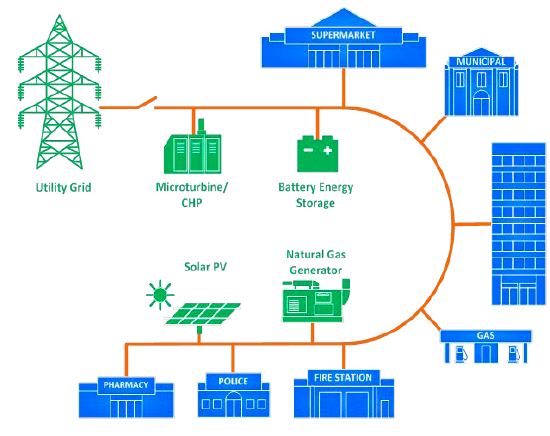
A set of solar panels (or photovoltaic arrays) first capture the energy of the sun. These panels may have different material models, but in order to improve efficiency, microgrids usually use high-quality equipment, such as monocrystalline silicon panels with an efficiency of up to 20% أو أعلى.
The battery panel is connected to a solar charging controller, which is responsible for regulating the voltage and current of input electrical energy to convert it into a form available to end users and protect devices in the microgrid from damage.
التالي, all energy will be transmitted to the combiner box, which can protect the rest of the system, reduce energy loss, and monitor the operational performance of the system. It also integrates all energy into one connection, through which all energy is transmitted to the inverter. Just like dc microgrid in microgrids, electrical energy needs to be converted into a type of electrical energy that can be used by humans.
The inverter converts direct current (العاصمة) إلى التيار المتردد (تكييف), making it suitable for various loads, such as providing power for household appliances, إلخ. Products such as Huawei inverters and growatt inverters, combined with storage systems, operate efficiently in microgrids and have the highest quality service supply on GycxSolar.
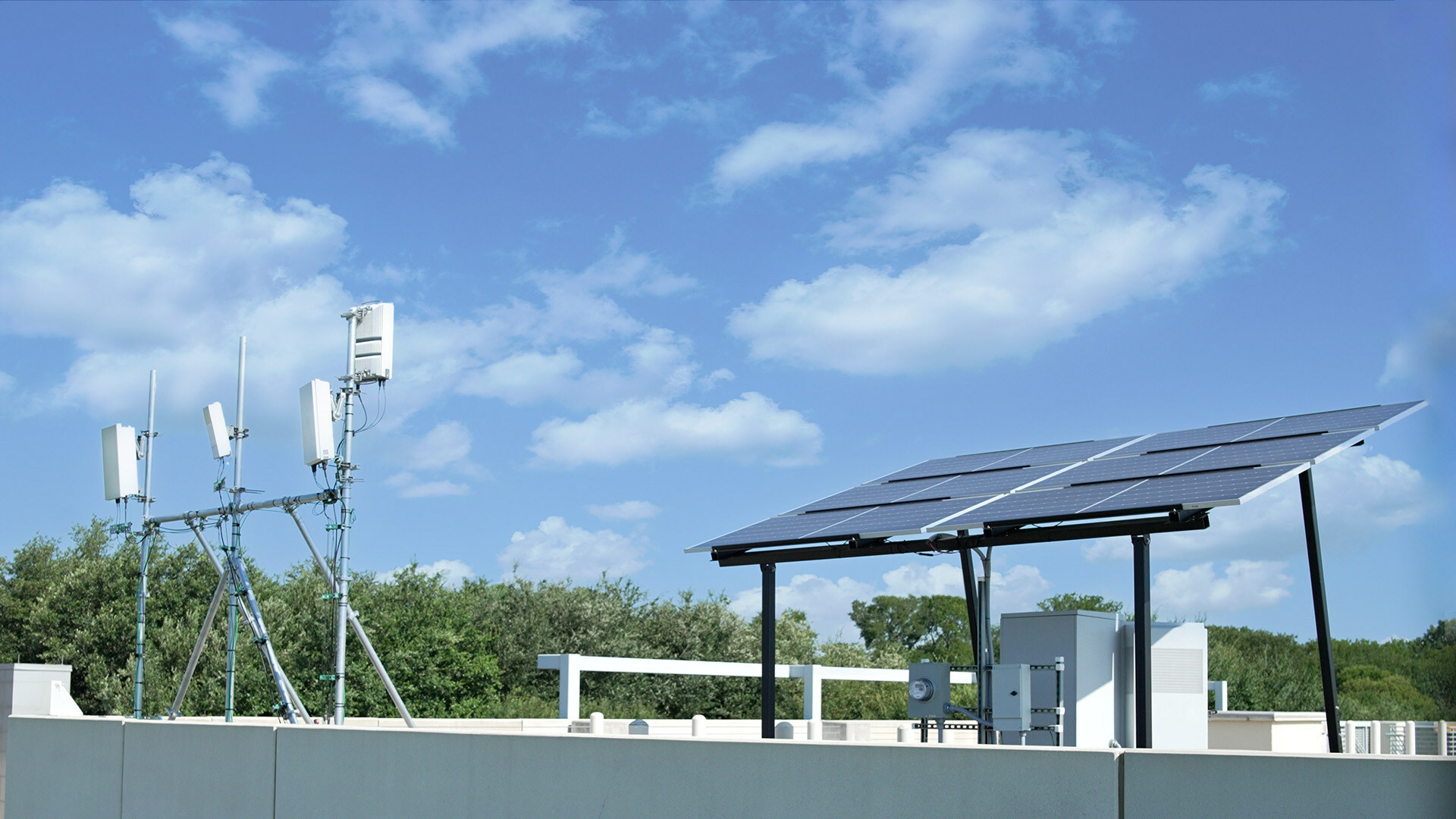
If too much energy is generated at a certain moment, this part of the energy will be stored in batteries for future supply when needed, which is crucial for achieving energy independence. The electrical energy output by the inverter can supply the load and regulate the distribution of electricity consumption.
The microgrid distribution function operates in the same mode as the power grid.
Microgrid energy storage also reduces dependence on the main grid and reduces the problem of insufficient electricity when there is no solar energy available, such as at night or during harsh weather or public grid maintenance.
In many modern solar microgrids, the entire grid can be connected to a larger grid as needed, which can help users obtain electricity more efficiently and reliably.
What benefits will solar microgrids bring to you
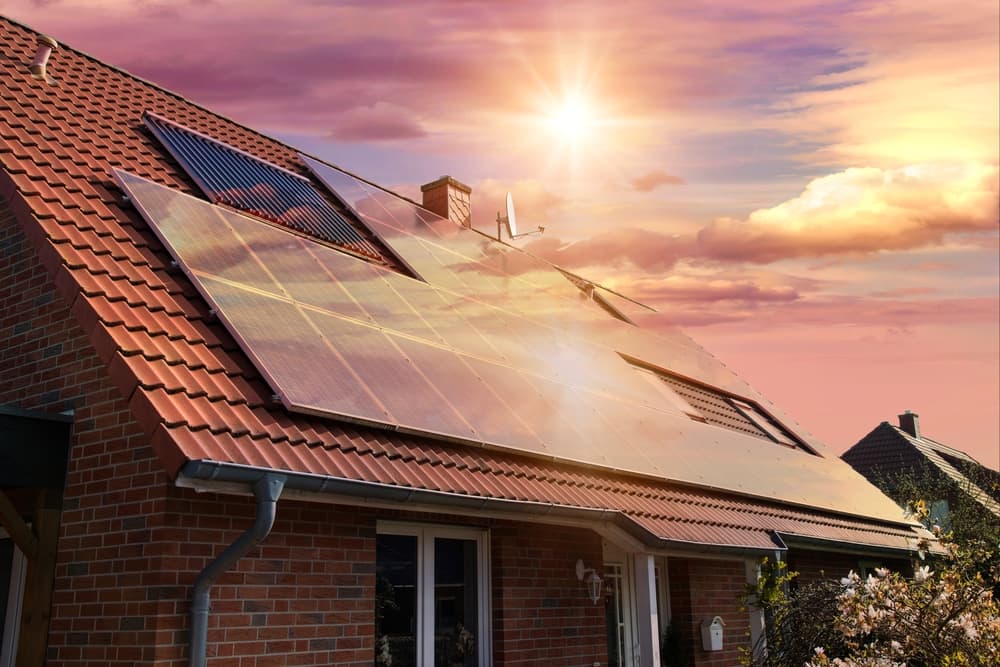
Solar microgrid technology has many benefits, مشتمل:
- Stable power supply during power outages
- Reduce reliance on non renewable energy sources such as fossil fuels
- Improve one’s own energy independence
- Reduce electricity costs and reduce electricity bill expenses
- Improve flexibility in electricity usage
خاتمة
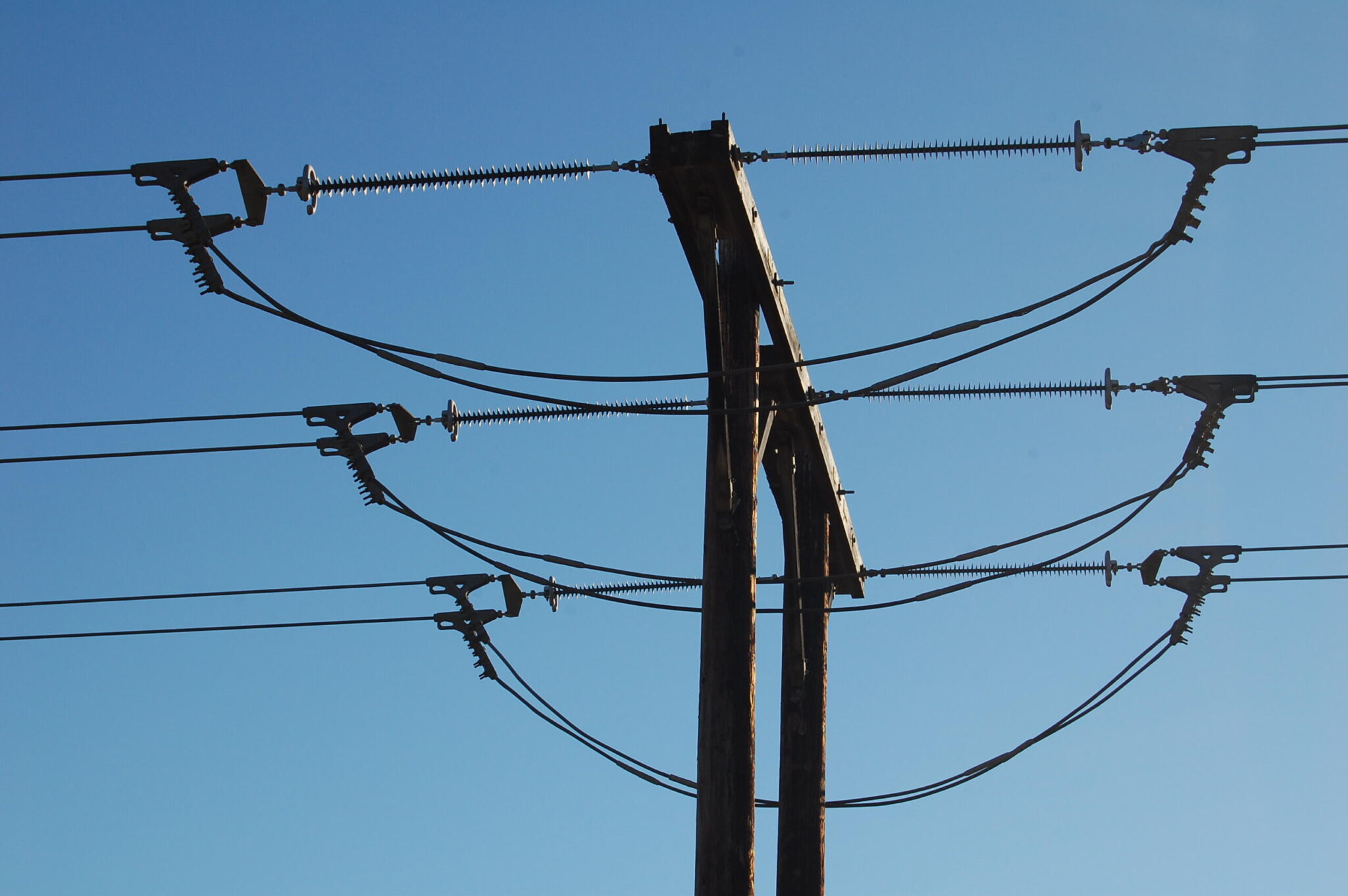
Installing a microgrid system requires consideration of multiple factors, such as load curves, power generation demand, and infrastructure limitations.
GycxSolar focuses on whether customers can afford investment costs, the technology and related energy resources they truly need, and whether they comply with environmental regulations in their location during the conceptual and preliminary engineering design process of microgrids, and considers the customer’s perspective.
Although microgrids have only become a mainstream topic in recent years, their own development has already gone through many years. From a financial return perspective, solar microgrids are highly attractive and meet the needs and goals of stakeholders. GYcxSolar has leading solar technology, including the ability to provide equipment such as solar inverters, and can help you create microgrid energy systems for your home or business.
